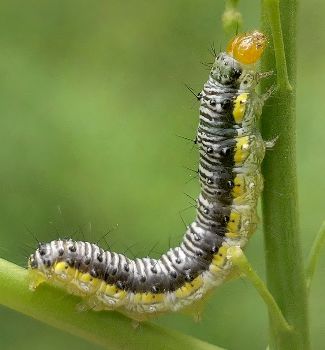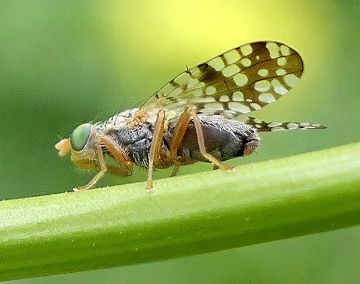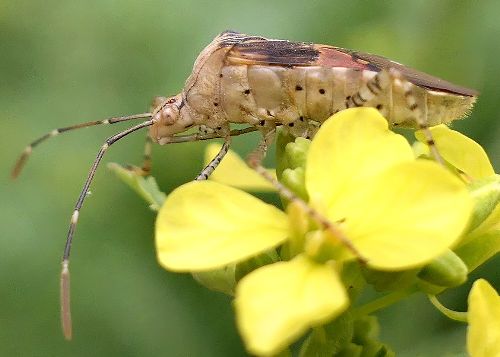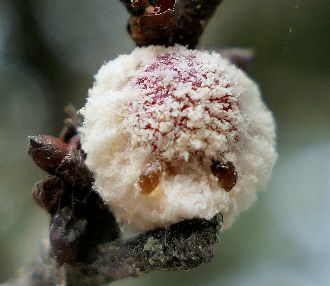
Evergestis rimosalis (cross-striped cabbageworm)

Phigalia strigataria (small phigalia larva mimicking a twig)

Unknown sp. (leafroller larva)
| Leafrolling caterpillars "stitch" the edges of the leaf together using a single type of silk produced from modified salivary glands near the mouth. By comparison, spider silk comes in several varieties and is produced from spinnerets at the rear end of the animal. |

Neotephritis finalis (fruit fly)

Murgantia histrionica (harlequin bug)

Hypselonotus punctiventris (coreid bug)

Unknown sp. (scale)
| I've had no luck in identifying these common scale that occur on Cedar Elm. The droplets on this female (males are winged and much smaller) are the honeydew excreted as she ingests sap and the white cottony stuff is a defensive coating. Although not usually very numerous, a colony of these insects can damage a small branch enough to cause it to drop leaves and eventually die. |

Lolium perenne (perennial ryegrass)
| The flowers of grasses have no showy petals or enticing nectar since, being wind-pollinated, they do not need to attract insects. Producing only the essential bits needed to reproduce, both the male anthers and the female stigmas are visible in this view. |

Taraxacum officinale (dandelion)

![]()